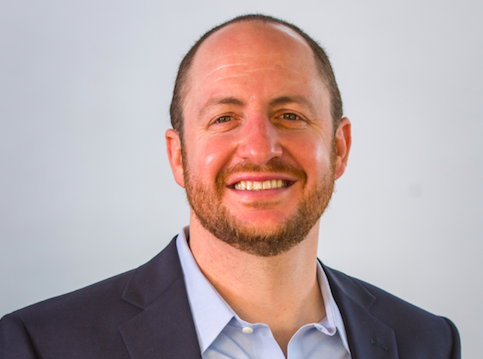Golf’s future relies on sustainability initiatives, says Reissman
Golf is facing significant challenges that threaten the very future of the sport. It’s battling to capture the imagination of the younger generation amid countless other distractions to build its future fan base (and player pool).
But the more tangible threat is the effect climate change is having. A report put together by the UK-based Climate Coalition – Game Changers – laid bare the drastic impact increased rainfall and drier summers are having on courses in England and Scotland. Playing time decreased by more than 20% in the UK during 2016/17, and a number of coastal courses are in danger of becoming completely destroyed.
LINK: Read more about the Climate Coalition’s Game Changers report here
The climate impacts are not exclusive to the UK. To tackle the issues head on in its own nation, the PGA (Professional Golfers’ Association) of America published its first-ever Social Responsibility Report in January, which has environmental conservation at its very heart.
To coincide with the report’s publication, the PGA of America became the latest organisation to join the Green Sports Alliance, the US body that works with sports clubs, venue operators and environmental scientists to develop cost-effective and environmentally-friendly solutions for sport, to mitigate its impact on the environment.
Constellation, the wholesale energy group, also partnered with the PGA of America as part of this initiative, and is in the process of carrying out an energy efficiency analysis (see box out).
The Sustainability Report sat down with Luke Reissman, the PGA of America’s senior director, partnerships, to discuss what the report means for the sport in practical terms.
TSR: Why is now the right time to publish a Social Responsibility Report?
LR: Social responsibility is intrinsically linked to the PGA of America’s long-term success and, more broadly, to the success of the golf industry. Our first-ever Social Responsibility Report is an opportunity to demonstrate the strides we have made across all platforms, such as our commitment to diversity and inclusion for women, youth, minorities and the disabled.
In addition, it highlights the game’s focus on preserving the environment and modernising our workforce. It is an open door to all facets of our business and a showcase to golf’s overall landscape.
TSR: How did PGA develop partnerships with Constellation, ERM and the Green Sports Alliance? What is the desired impact of the partnerships?
LR: The report was developed in conjunction with sustainability consultancy Environmental Resources Management (ERM) and spurred, in part, through our partnership with Constellation, the PGA’s Official Energy Provider and Sustainability Partner. The study is designed to attract future partnerships and talent that further the PGA and our mission, while showcasing best practices and case studies. Our work with the Green Sports Alliance is part of our efforts to get more of the golf industry involved. We are looking to set standards for what we are doing and where we want to go.
Golf has many wide-reaching positive impacts – from the jobs created in local communities to green space and wildlife habitats that golf courses provide to the significant philanthropic contributions our industry delivers to worthy causes. Our future relies on how well we can expand these initiatives to new audiences, while injecting new energy into the services we provide to our PGA professionals, in order to grow the game worldwide.
TSR: What kind of impact is golf having on the environment, and what practical things can the PGA and its partners do to mitigate it?
LR: The PGA of America, in partnership with the broader golf industry, is committed to ensuring that we are good stewards of the environment at our facilities. Golf courses provide green spaces for communities around the world, preserving land that could otherwise be developed and offering habitat for a wide range of plants and animals.
We recognise that each course operates in a different environment, so the PGA is working with Golf Course Superintendents Association of America and other leading organisations in the industry, to ensure that courses in regions that, for example, have water scarcity concerns are finding ways to reduce water consumption or use recycled water.
We’re proud that many of our PGA professionals are working alongside superintendents, club managers and owners at their facilities to integrate best management practices for energy use, water use, turf management, wildlife and habitat.
TSR: Has the PGA set any targets?
LR: Our goal is to promote education and awareness for the golf industry. We have steered our championships to become 100 percent green by acquiring renewable energy credits. Meanwhile, our partner, Constellation, is working with the PGA to conduct energy efficiency analyses and recommend energy management programs to help reduce golf’s environmental footprint.
This includes providing guidance to help our members make environmentally sustainable decisions and achieve continuous improvement over the coming years at their own clubs nationwide.
TSR: Are you creating environmental standards for the development of new courses?
LR: While the PGA of America is taking important steps to ensure continuous improvement of our sites, we also wish to recognise the Golf Course Superintendents Association of America, USGA and Environmental Institute for Golf for their commitment in setting industry standards. We hope to continue to collaborate with these organisations and others in the future to further industry benchmarks.
In addition, Environmental Resources Management conducted a sustainability assessment with PGA Professionals and nearly 30 key industry stakeholders that defined six key priority areas to develop a long-term vision and strategy for sustainability within the PGA including: fostering diversity and inclusion; engaging the next generation; educating the workforce of tomorrow; enhancing lives through golf; growing the game around the globe; and improving our environmental footprint.
TSR: What kind of practical help will the PGA give to course operators to become more sustainable?
LR: We are working with Constellation and the Green Sports Alliance to connect with courses around the country, in order to spread the message. The Green Sports Alliance brings together venue operators, sports team executives and environmental scientists to exchange information about better practices, and develop solutions to their environmental challenges that are cost-competitive and innovative.
The information gathered is to gain a better understanding of how sporting events can be performed in an environmentally sensitive manner. We are also working with other sports entities to learn their innovative solutions for social responsibility.
Stars aligning: PGA’s Constellation partnership
Reducing energy use is one of the key pillars of the environmental section of the PGA of America’s Social Responsibility Report. As part of its partnership with Constellation, the wholesale energy group will work with golf clubs around the US to (a) analyse their energy use, and (b) connect them with service providers who will install new technology that will reduce energy use. There is no upfront cost for the equipment with clubs paying via their energy bills.
Liberty National Golf Course in New Jersey was one of the first clubs to work with Constellation. After a consultation, the club installed new LED lights that reduced energy consumption by 50% and is on course to save 250,000 kWh of energy every year.










Leave a Comment
Your email address will not be published. Required fields are marked with *